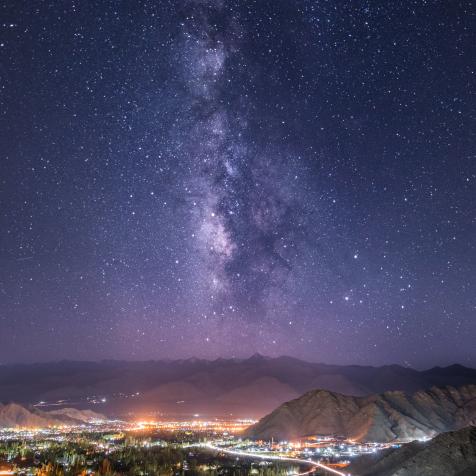
jamesbenet
Celebrating Hubble's 30 Year Legacy

Three cheers for the Hubble! First launched in 1990 aboard the Space Shuttle Discovery, the storied space telescope is celebrating is thirtieth year in lonely orbit around the Earth.
Throughout these past three decades, the Hubble Space Telescope has opened its great eye towards the heavens, revealing sights of unparalleled beauty and deep mystery. Let’s take a look at some of the highlights.

Top Moments from Hubble

Frank Rossoto Stocktrek
- Through measurements of changes in brightness of a special kind of star (known as Cepheid variables for the fans of jargon), the Hubble was able to help astronomers pin down a precise age of the universe: 13.7 billion years old.
- Distant supernovae (giant stars going out with a bang) are fainter than they ought to be, as measured by telescopes, including the Hubble. The culprit? The expansion of our universe is accelerating – it’s getting bigger and bigger, faster and faster, every single day. We call this mysterious expansion “dark energy’ and we have no idea what’s going on.
- We can’t see black holes directly, because black holes are black (it’s in the name), and so is space. But we can see gas and dust swirling around them, cramming together as they rush headlong into the gaping maw of those monsters. As the gas swirls, it heats up and glows brightly – and the Hubble was a black hole hunter extraordinaire.
- Have you ever looked up at the night sky and wondered what’s in the space between all those stars? Well, the answer is more stars. But what’s in between those? A plucky group of astronomers made the Hubble stare at the same postage-stamp-sized patch of the sky for eleven straight days, revealing what we now call the “Deep Field”. The image is striking: a beehive of lights, but not of stars, but of entire galaxies. If you ever want to feel small and insignificant, just look to the Hubble.
- Beautiful images of effervescent nebulae are always a crowd-pleaser, adorning the desktop backgrounds of computers worldwide. But those images are more than just a pretty picture: those high-resolution scans reveal how stars are born (violently) and die (also violently), helping us understand the (probably violent) origins of our own solar system.
- Speaking of solar systems, sometimes astronomers trained the Hubble at targets a little bit closer to hole. In 1994, we got to watch the spectacle as comet Shoemake-Levy 9 smashed into Jupiter (which, despite releasing more energy than the entire world’s nuclear arsenal, left nothing more than a bruise). We got our best detailed look at Pluto before the New Horizons flyby. We discovered moons around the giant planets. And best of all: we used the Hubble to find evidence of liquid water oceans within the moon Ganymede.
The Next Hubble

NASA/ESA/HUBBLE HERITAGE TEAM/STScI/AURA/SPL
Yes, the Hubble is already well past its retirement age. It was supposed to be replaced decades ago, but delays and budget constraints have kept it flying – and producing a tremendous amount of scientific data. Someday, hopefully soon, NASA will launch the James Webb Space Telescope and officially retire the Hubble. But that doesn’t mean the fun has to stop: that magnificent telescope has taken way more data than the astronomers of the world have been able to analyze, meaning that generations of scientists will be mining gold out of the archive data for years to come.
What new questions will be answered, and what new mysteries raised? Only time will tell.



















